Sai Sword: The Three-Bladed Crime-Fighting Sword
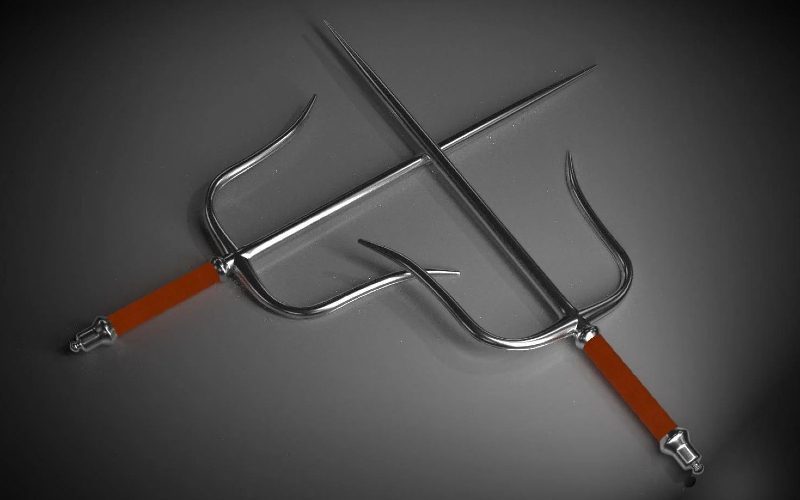
What’s in this article?
The Sai Sword is a trident-looking type of shortsword that has 3 blades and is usually associated with ninjas. It was often used in Okinawa, Japan as a baton tool to fight crime and it has widely spread throughout martial arts all over the world making it a famous sword for modern cosplay and media.
In this article, we will discuss the characteristics and many parts of the Sai. We will explain each of them thoroughly and then go over the many uses. Then we shall explore its history and debunk the myths that surround the Ninja background of this sword. We will compare the Sai sword with a dagger and then with a Katana.
Characteristics & Parts of the Sai Sword
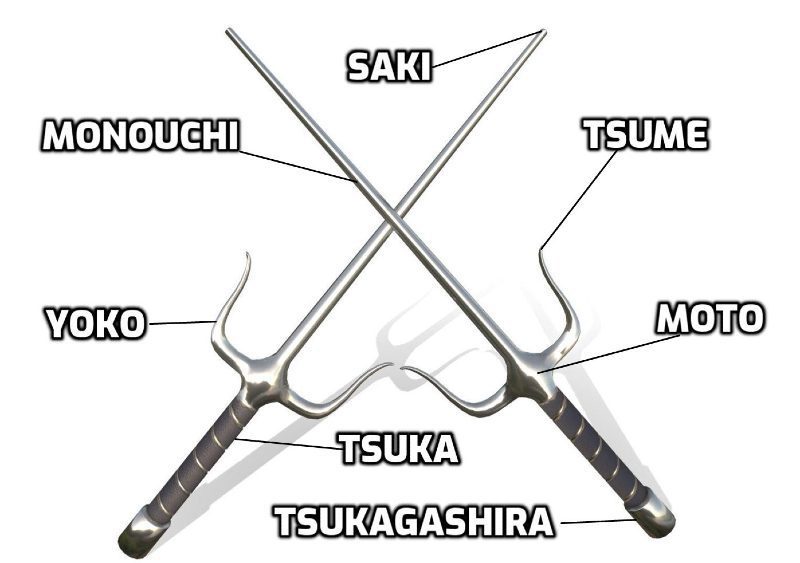
The Sai sword might just be the easiest type of sword to recognize in the world because of its distinct and unique trident and octagonal-looking shape. It has three blades with the middle being the largest and the other two slightly shorter.
Blade – Monouchi
The main and largest blade, which is often used as the offensive blade in the Sai sword, is called the Monoguchi. This blade starts from the guard and goes up to the edge, or Saki, gradually coming to a point.
It is usually made of iron or steel and isn’t sharp on the sides, although there are Sai swords that are sharpened and made to be double-edged. The Monouchi, or the blade, of the Sai, is typically around 15 inches (40 cm) long.
Blade Tip – Saki
Saki is the name of the tip of the blade of the Monouchi, or the Sai sword. Sai are usually shown in media with a sharpened tip and while this can be the case, most of the time the Saki is blunted and not sharp at all. That is why it is considered more of a defensive weapon than an offensive one.
Guard Blades – Yoko
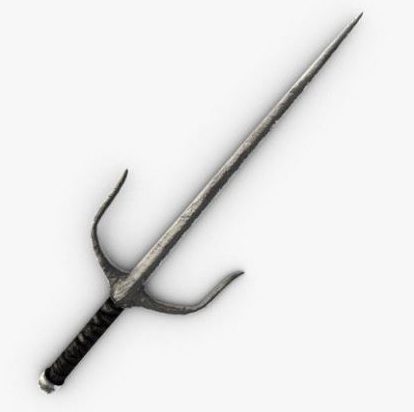
The Yoko are the two side guard blades. They are considered the shield of the Sai sword and are mostly used either for deflecting, catching, or disarming enemies that are attacking with an edged blade. These two guard blades give the Sai great defensive abilities.
Usually, the guard blades of the Sai are around 1.5-2.3 inches (4-6 cm) long. They often point upwards to make a shape that looks like a trident, but sometimes they can be bent into an S shape too.
The Tips of Each Side Blade -Tsume
The tip of the Yoko, or the guard blades, are called Tsume. These are typically not sharpened at all. It’s better if they are blunt so they can do their job easier and deflect incoming strikes.
While they’re usually not sharpened, some Sai swords have the Tsume sharpened. If it is sharpened, it makes for a much better throwing weapon so that both the Saki and the Tsume will pierce through the enemies’ flesh better.
The Point Between Guard Blades – Moto
The point that holds and starts all three of the Sai sword blades is called the Moto. The Moto is made very sturdy so that it can withstand any type of impact. Sometimes it is made bigger, but occasionally it is the same length as the guard blades.
The Handle – Tsuka
The handle of the Sai Sword is called Tsuka. The grip on a Sai sword is often wrapped with rope or leather around the handle of the blade. Sai’s don’t have very big handles and that’s the reason why it was mostly used as one-handed sword. The handle is usually around 4 inches (10 cm) long.
The Pommel – Tsukagashira

The Tsukagashia is the pommel of the Sai Sword. This sword doesn’t necessarily have a pommel per se, but you may see a metal cap on the end of it from time to time. This can give the user a better grip and can sometimes be used for bashing attacks.
Scabbard
Believe it or not, the Sai Sword does have a scabbard. Usually, it is made out of leather so that it can be lightweight and hold both of the Sai’s on the belt without a problem, but you can also find wooden types of scabbards for this sword.
There aren’t scabbards for each individual blade of the Said. Instead, it is just a bigger scabbard that fits all of the blades. Sometimes, the leather scabbard can fit the whole Sai sword inside since it’s such a small weapon.
Length & Size
The overall length of the Sai sword starting from the very bottom of the pommel and ending at the tip is 13 to 20 inches (35 to 50 cm) long.
This makes it a very short, almost dagger-type of weapon. That is why anyone can use it one-handed very easily while using extremely fast attacking motions. This is also the ideal size for a throwable weapon to be very effective.
Weight
The weight range for the Sai sword is often 3.3 to 4.4 lbs (1.5 to 2 kg). This depends of course on what type of material it is made from. The weight listed above is for your standard iron or steel Sai, but if you go for a rubber, foam, or plastic Sai, you will most likely find one around 0.9 lbs (400 grams).
Although it is a very small sword, the metal versions are significantly heavy for their size. It’s heavy because it needs to be made from hard, durable materials that can withstand strikes from larger swords like katanas.
The weight of the Sai makes it also very good for throwing. It can surely stick inside the flesh of an adversary because of how heavy it is.
Uses for the Sai Sword

Sai Swords were mostly used as self-defense weapons. They are used one-handed and usually duel-wielded with a Sai in each hand. Sai users will also commonly have a 3rd sword sheathed behind their back.
The reason why there’s a third one is that it can be used as a throwing weapon to catch the enemy off guard, or simply if the blade breaks on one of the other two Sai.
Combat & Crime
The Sai sword was made strictly for battle and doesn’t have any use in say, farming, just like many other martial art swords. It was used in a lot of combat scenarios, especially when fighting against criminals.
The Sai sword was great for fighting crime because it can essentially be used like a modern-day police baton. It provides great defense against unarmed combatants and even against strikes from blunt or sharp weapons.
Since the blade of the Sai wasn’t even sharpened most of the time, it gave the crime-fighting heroes a chance to take down the criminal without actually killing them.
Martial Arts
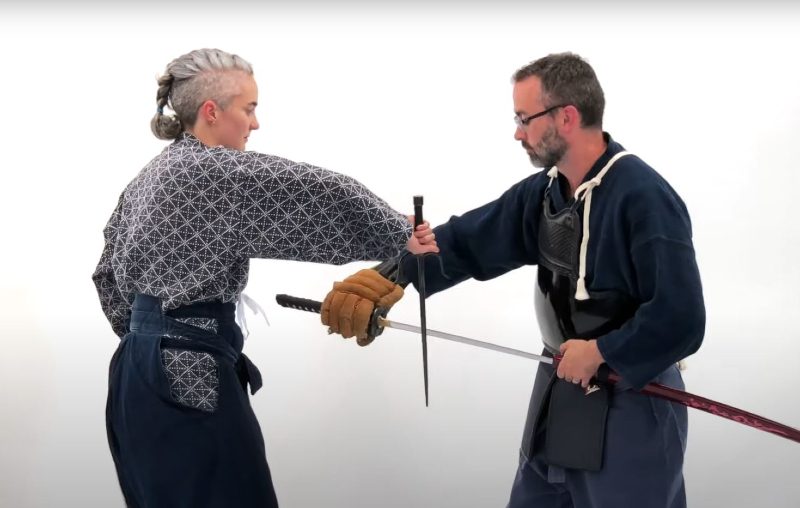
The Sai weapon is a very renowned tool used in Japanese martial arts known as Ninjutsu and Kobudo. It can also be found in a lot of other martial art styles that are found in the Southern Chinese provinces.
It began being used in the martial art called Ju-Jutsu which comes from Japan. Then it started appearing in Karate, Kung fu and even can be traced back to Ko-Budo and the Tja Bang in Indonesia. Today there is even a type of Jutsu devoted to this weapon called Sai-Jutsu.
Historical texts have shown that various martial art black belts and experts from the Okinawa region could use their Sai so skillfully it was as if it was an extension of their arms. They were mainly used as throwing weapons in martial arts.
LARP & Cosplay
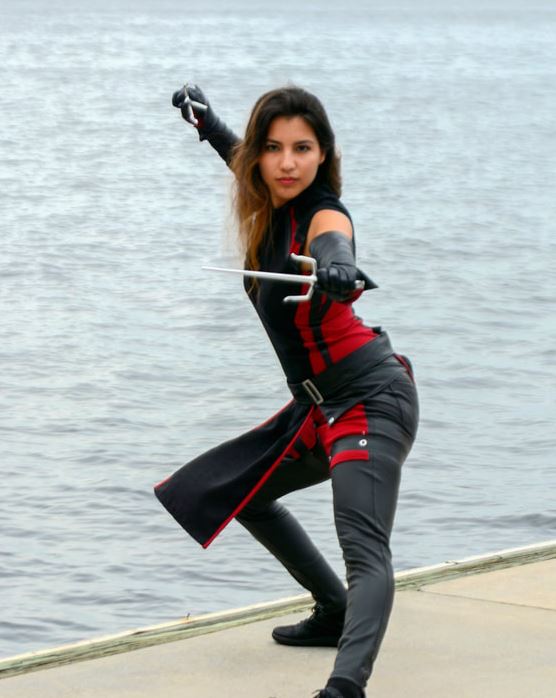
The Sai sword’s modern role is in the LARP and reenactment field. No matter what type of reenactment and cosplay convention it might be, or even a full-on LARP event, you will most likely see this easily identifiable pronged weapon.
Perhaps the most famous Sai user of all time is Raphael from Teenage Mutant Ninja Turtles. (TMNT). People often consider it a weapon used by Ninjas because of how it has been portrayed in anime and other media over the years.
Is it a Beginner Friendly Sword?
The Sai sword is a very beginner-friendly sword. Some martial art styles describe this weapon as an upgraded form of hand strikes for when your hands might not be enough on their own.
It is small, simple, and can be used effectively with the simplest strikes. It’s usually dual-wielded and requires very fast moves but will feel balanced and as if you are just striking with your hands. Make sure to get a Sai with a blunt tip first if you are a beginner.
Although you won’t have any trouble striking or defending with it, you might need some time to master how to spin it.
How to Spin a Sai Sword

Make sure you choose the right size Sai, the sword shouldn’t go past your elbow when you’re holding it. You have to hold a Sai the right way for it to spin. Hold the Sai and ensure that the blade is between your middle finger and your index finger.
Next, close your hand with your palm facing toward you. Extend your arm and shoulder out to the side at a 45-degree angle with your elbow at a right angle and your Sai pointing upwards. Now, slowly open up your palm and naturally let the Sai fall outwards toward the floor.
The wrist should be turned outward, and you should halt just before the Sai reaches your elbow. Furthermore, mildly twist your wrist down and turn your palm out and away from your face while doing so.
Close your hand and raise your wrist to bring the Sai sword back up and drag the blade back toward the ceiling. Turn your hand toward you by turning the wrist 180 degrees.
History of the Sai Sword
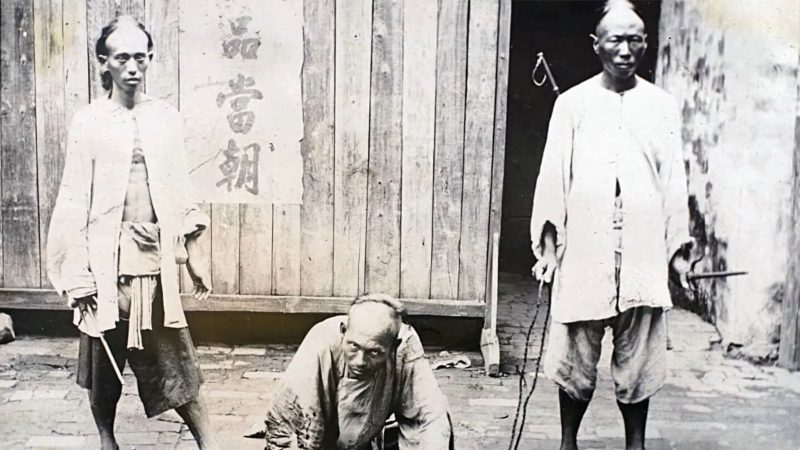
The Sai is often thought to be a Japanese sword but its origins lie outside Japan. It is mostly known today however with the usage of it in the province of Okinawa Japan.
It’s a sword that could have been brought to Japan in the 14th century and used in agricultural affairs, but this isn’t all that likely since it wouldn’t have been a very good tool to use agriculturally and iron would be a very expensive metal for farmers to have as a tool.
During the time of the Ryukyu Kingdom, Sai were carried by the Ufuchiku (police chief) and the Chikusaji (detectives). They used it to catch criminals and control crowds by poking, hitting, throwing, hooking, or catching, among other things.
In 1429, it became illegal to carry a weapon on Okinawa. The law was fully enforced in 1609 when it became illegal for local people to carry and use weapons. So, they utilized non-weapon instruments like the Sai to protect themselves from different attackers.
In 1668 an Okinawan prince by the name of Moto Chohei realized just how effective this tool was for self-defense without actually killing anyone, but can also be lethal if needed. He quickly began mandating its use by police forces in his region.
The Sai sword was also often used to fight off attackers with sticks, daggers, spears, halberds, or even katanas. This sword was useful because it was very easy to hide; it could be tucked into a kimono jacket sleeve or hung from a belt without being seen.
Origins
The history of the Sai Sword as we know it today starts in Okinawa, Japan. But the origins of this very same sword lie out of Japan itself.
While some historians have their own opinion about the origins of the Sai, It is generally agreed that the Sai sword originated in China and was brought to Japan by Chinese monks. It is one of the very few Okinawan weaponry that did not originate from an earlier kind of weapon or tool.
There are archeological traces of this sword in mainland China and India alike before it even arrived in Japan. Its origins are most likely connected to the Indian Trishula (a trident-like weapon). It is very likely that these types of weapons were used in Hinduism, so their origins may be from there.
It was also found in the Indonesian isles too and even made its way over to Vietnam and Thailand. Swords like the Sai that were used there were known as the Chabang or Tekbi. Origin theories say that the Sai sword is a form of a short trident, something that was used often in ancient times – even in Rome.
Did Ninjas Use the Sai Sword?
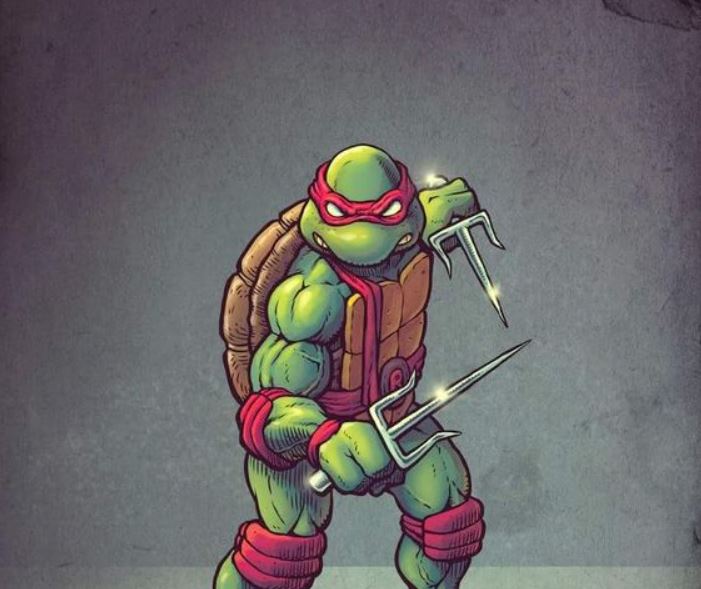
Ninjas, or Shinobi, did not use Sai Swords.
Raphael of the Ninja Turtles is out of luck because ninjas did not use Sai. Because Sai are mostly from Okinawa, it is unlikely that even Samurai Bushi warriors ever saw them, much less even practiced with them.
A ninja’s closest weapon to a Sai would have been a Jutte, which is almost comparable to half of a Sai. It’s a truncheon made of iron with only one fork on the side that can hold back a blade. Unlike Sai, the Jutte is very thin, which makes it hard to get a sword out of a tight spot. Sai’s wide forks were used to catch wrists, clubs, or sticks.
The Difference Between Sai Sword and a Dagger
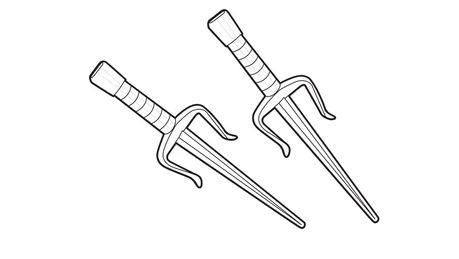
The Sai is a blunt-force weapon made for hand-to-hand combat. It is used against swords by dulling, attempting to break, or entangling them, and they work best when used in pairs. They were made to fight against the Katana or other swords. Techniques used with the Sai are made to counter sword users or as blunt-force batons.
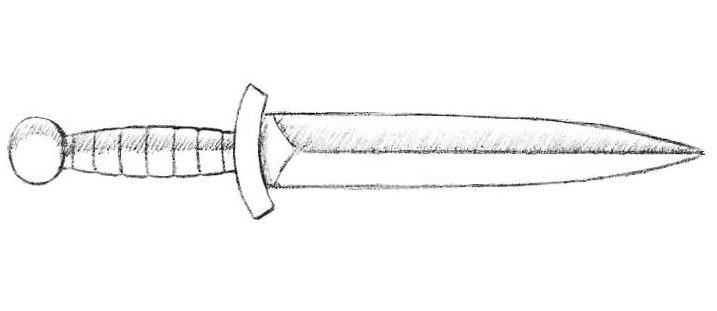
A dagger is a bladed weapon that can be as long as a knife or as short as a small sword. Daggers are used as knives in fights and offer slightly more reach unless they are used with a buckler. Then they become a weapon that can be used efficiently against any other one-handed weapon.
Sai vs. Katana
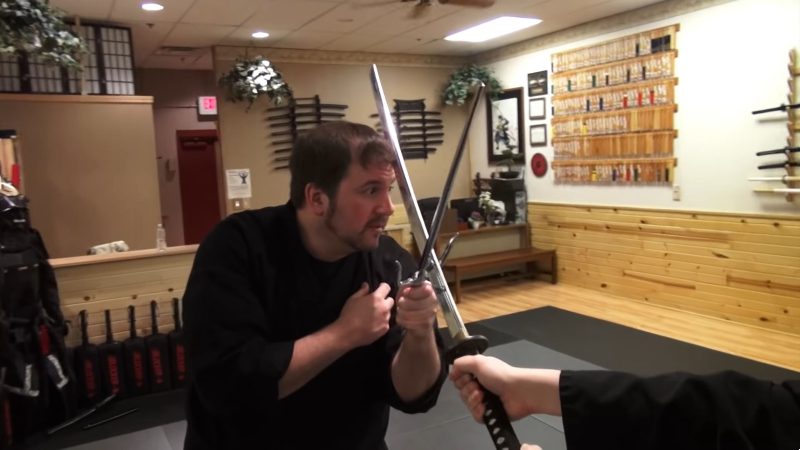
Sai are weapons that can be used with one hand and are usually between 13-17 inches (35-45 cm) long. That isn’t all that long, but you have a unique guard that does an excellent job of stopping attacks from other swords. A katana is a two-handed sword that is generally somewhere around 37-47 inches (95-120 cm) long and can be used for both slashes and thrusts.
The clear reach disadvantage that the Sai has against the Katana can make it a very ineffective tool to use, but there are some that claim that an experienced Sai wielder can catch a Katana while it is being swung.
The thing is, as many Sai users will say, catching a Katana in the middle of a slash could be a very hard thing to do. If the Katana wielder attacks with an overhead strike, it could be possible to deflect or lock the blade with the Sai, but what happens when they stab at you? A professional Katana wielder can feint an attack and strike from a different way in a blink of an eye.
If a Sai user is fighting against a novice Katana user, their chances of winning are significantly better. However, even if an experienced Sai user faces off against an experienced Katana user, the Katana will most definitely win.
Conclusion
Today the Sai sword might just be the world’s most popular sword right after the Katana. It is a commonly used weapon in martial arts, anime, movies, LARP, and reenactments. It is a must-have sword for any enthusiast or collector out there.




